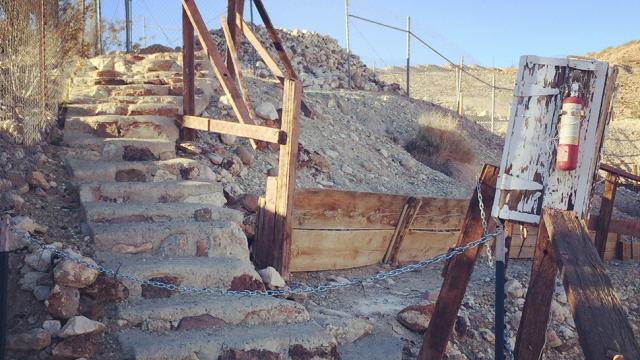In the desert two hours northeast of Los Angeles, just outside the town of Barstow, there is a peculiar little place called the Calico Early Man Site. If you’ve driven either direction, from LA to Las Vegas or back, you’ve probably seen the sign for it, mysteriously and without any real information implying that the visiting public might want to stop by.
But what exactly is this place and what are you meant to see there?
The Early Man Site is, depending on who you ask, either a unique and globally important archaeological site — marking where tool-using humans settled on the shores of an ancient lake more than 30,000 years ago — or it is the last gasp of a famous anthropologist’s sad and fading career, a wilfully misinterpreted landscape full of nothing but loose gravel and rocks.
In the latter case, the Early Man Site is not quite a hoax, but it is certainly nothing more than an archaeological side-show, a circus act for people more interested in fiction than rigorous anthropology. In the former case, however, it would be one of the most important — and overlooked — historic sites in North America.

Astonishingly, it was Louis Leakey, of all people — the venerable co-discoverer of the world’s oldest hominid fossils, found in East Africa’s Olduvai Gorge — who served as one of the earliest official excavators for the Calico site.
A more cynical theory, however, claims that Leakey, coming to the end of both his life and his career, was feeling left out and forgotten as the archaeological world had moved on to discuss other finds and other scientists.
A discovery of this magnitude, and a site that might vie with Olduvai Gorge in human importance, could bring his name back into the limelight.
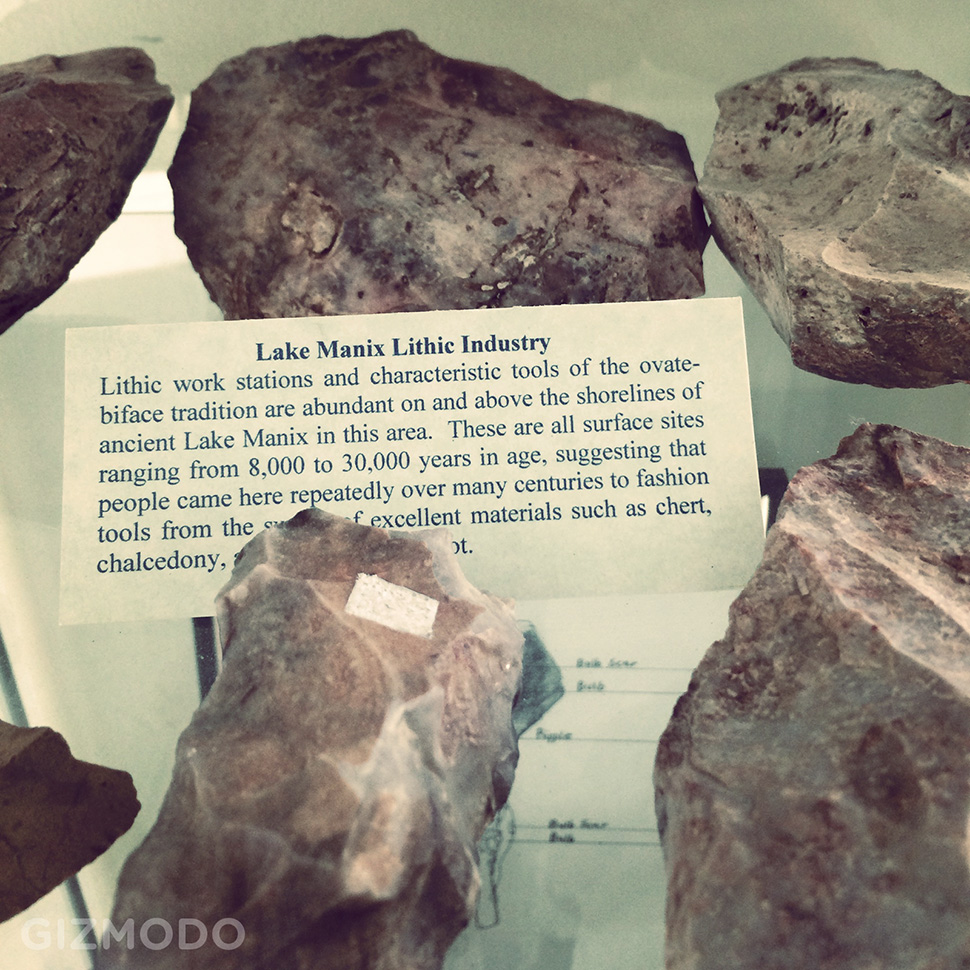
Enter Ruth “Dee” Simpson, the excavator who first regaled Leakey with tales of sharpened rock blades and other artificially enhanced stones found amidst the rubble and sand of the area.
As the region was being denuded by local collectors of its semi-precious stones — including rocks such as agates — it seemed increasingly urgent to set up an official dig site and to catalogue the possible remnants of ancient tools, these scattered technical artifacts left behind by now long-lost human settlers.

Leakey jumped into his new role, helping Simpson both to establish the site and to vouch for its authenticity — but either they wanted far too strongly for the stone flakes found at the site to be artificially created stone tools, or there really were human beings in what is now southern California 30,000 years ago or more.
These humans were the “Early Man” of the site’s throwback title and, if they were real, they would change our understanding of how (and when) the continent was first populated.
The actual Calico Early Man Site, however, reached after a short drive on an unpaved road meandering north from the freeway, does not present these two interpretive options. While remaining open about the specific timeframe proposed for the region’s initial settlement — and explicitly rejecting some of the more outlandish claims of tools more than 200,000, even 300,000, years old — the site very much accepts its own Early Man hypothesis.

The overall notion is that, during the last Ice Age, an enormous lake covered the region, its wildlife-rich shoreline eventually settled by human beings. These humans left their tools behind in the form of specially shaped stone blades — many of which could then have been collected by late 19th-century prospectors. This was the narrative told to me by Chris Christensen, my on-site guide, who himself once collected rocks in the region with his mother.
Oddly enough, this means that these ancient human tools could very well have been scooped up, polished, sold, and incorporated into private collections of semi-precious stones, without their collectors realising they had actually nabbed ancient artifacts.
Those aren’t rocks, then, but human instruments — prehistoric technology mistaken for mere geology.
If these are actually tools, in other words, not just rocks and gravel, then many supposedly geological collections stocked with rocks from the region actually contain unrecognised technological objects: deliberately designed and fabricated artifacts that are not natural features at all. They are artificial tools mistaken for gravel.
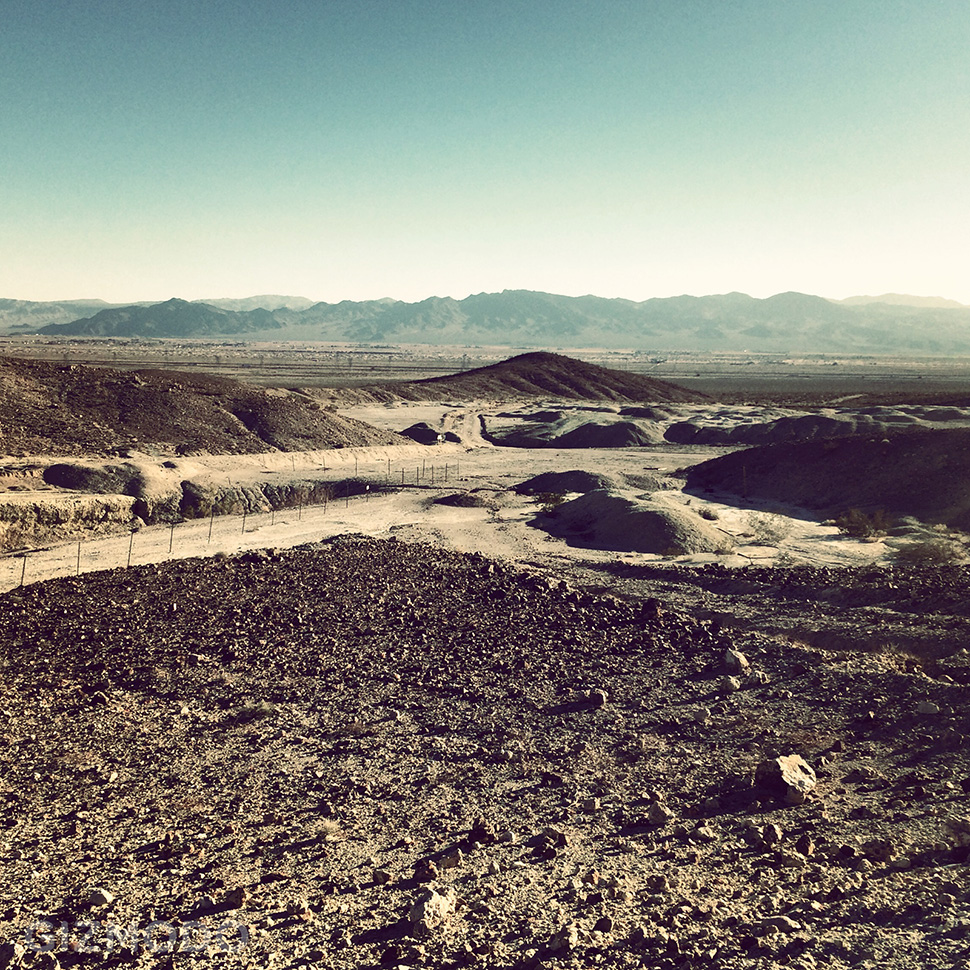
However, the exact opposite point can be made — and, in fact, this is the dominant interpretation of this much-disputed desert site — which is that these remote and dusty landscapes are just gravel mistaken for tools. It’s just a bunch of rocks.
There is nothing at all to see here, in other words, except some unremarkable stones, accidentally chipped and weathered over tens of thousands of years to resemble prehistoric human-made scrapers and blades.
So is this geology or is it technology? Are these natural objects or are they artificial tools? This weird interpretive dilemma is central to the Calico Early Man Site.
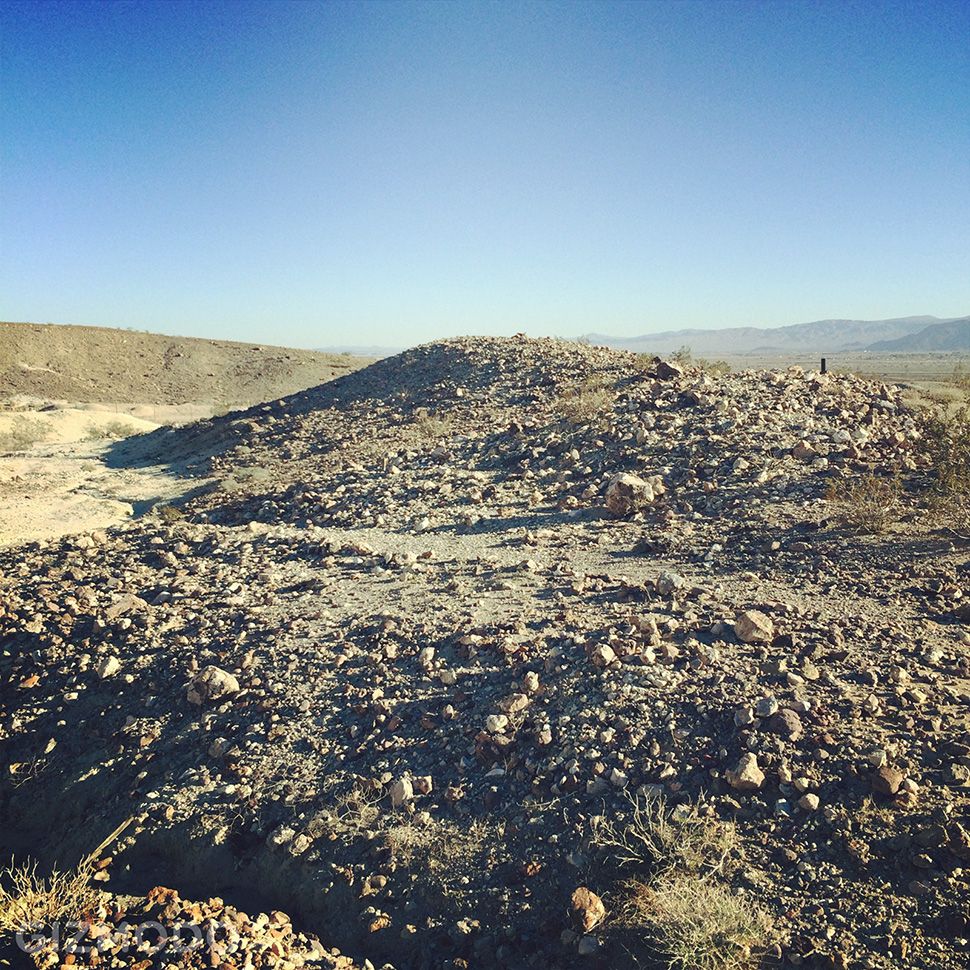
Of course, this is exactly why the site is so weirdly evocative: it embodies perhaps the key question about the very origins of “human” activity on Earth, challenging visitors to identify the surreal moment at which a specially shaped rock is suddenly so much more than mere geology.
The point at which a peculiar piece of agate, for instance, actually becomes a human-shaped tool — a designed artifact, a piece of technology — represents an extraordinary cognitive and intellectual change in the animal kingdom.
From that moment on, objects can be classified as either natural or artificial. Before this point, there was mere geology. After this point, there are artifacts, tools, technology, gadgets.
So the Calico site basically stands exactly on this weird dilemma, where the distinction between a mere rock and an artificially shaped tool takes on an importance it might not otherwise seem to have.
However, the difference between a rock and a shaped tool is literally the difference between a planet — a natural, un-designed debris field of gravel and waste rock — and what we would now call the built environment, a shaped collection of tools and technologies specifically identified with our species and, rightly or not, recognised as separate from the natural world.
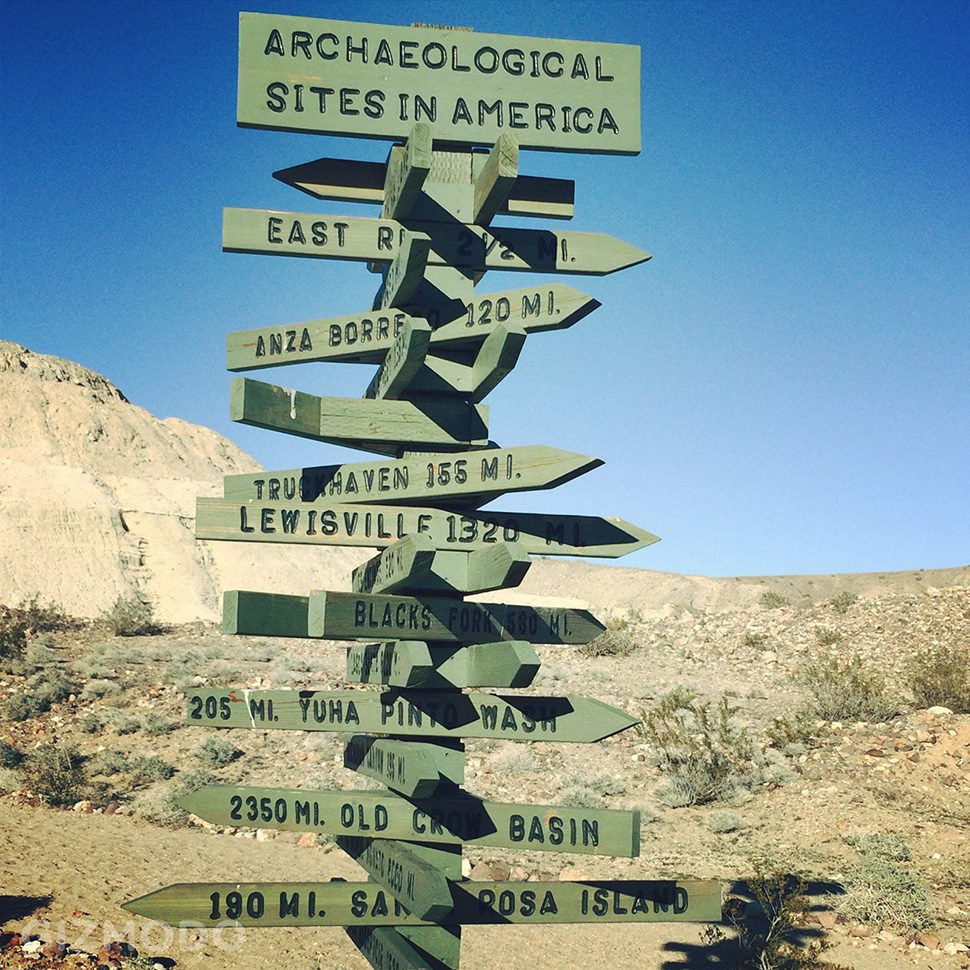
So that’s the Calico Early Man Site, located midway between Los Angeles and Las Vegas, two of the most outrageous urban settlements on the Earth today, easily reached — if you don’t mind gravel roads — from the nearby freeway.
Here is it on Google Maps.
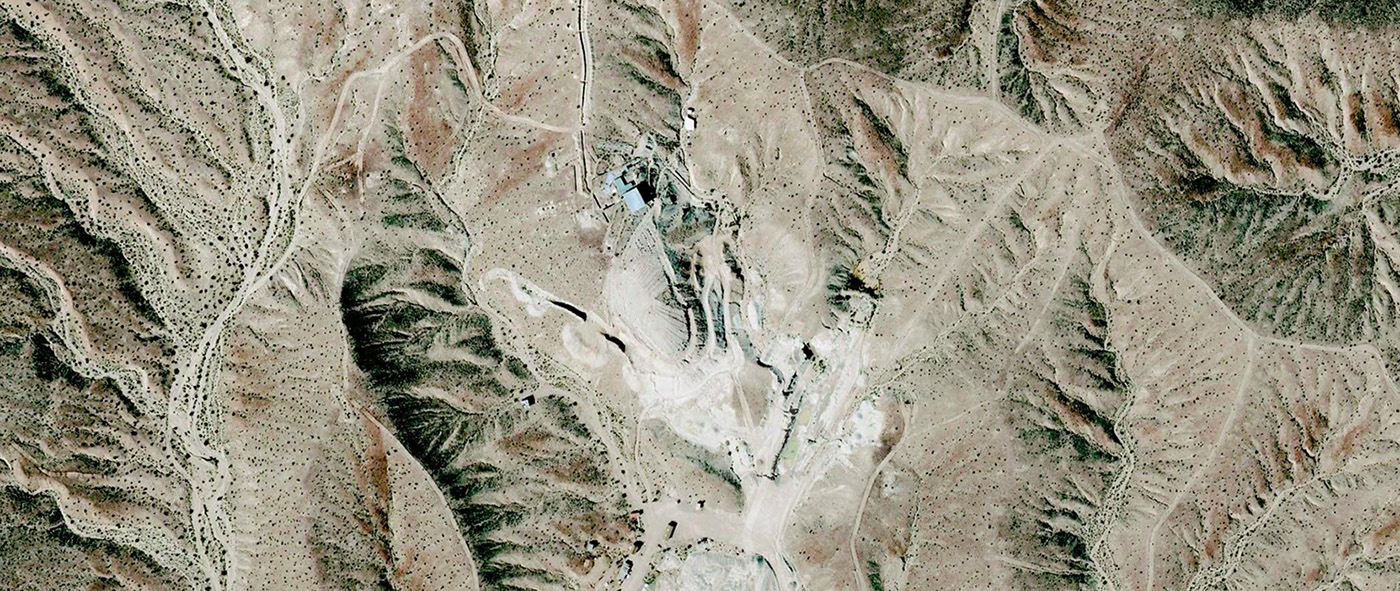
It’s not a small site by any means — yet, if you zoom out even the smallest amount, you can lose the whole thing, unable to locate where it was you once hiked, where you parked your car, or where you lazily kicked the gravel looking for old tools.
Now imagine, zooming back in again to see the site, amidst the millions of loose rocks found scattered all over the site, trying to spot a few particular rocks, a few specifically enhanced stones that would indicate prehistoric human settlement. The mind boggles at the difficulty of sorting through and filtering the landscape, trying to differentiate between Earth and artifact, between mere rock and human technology.
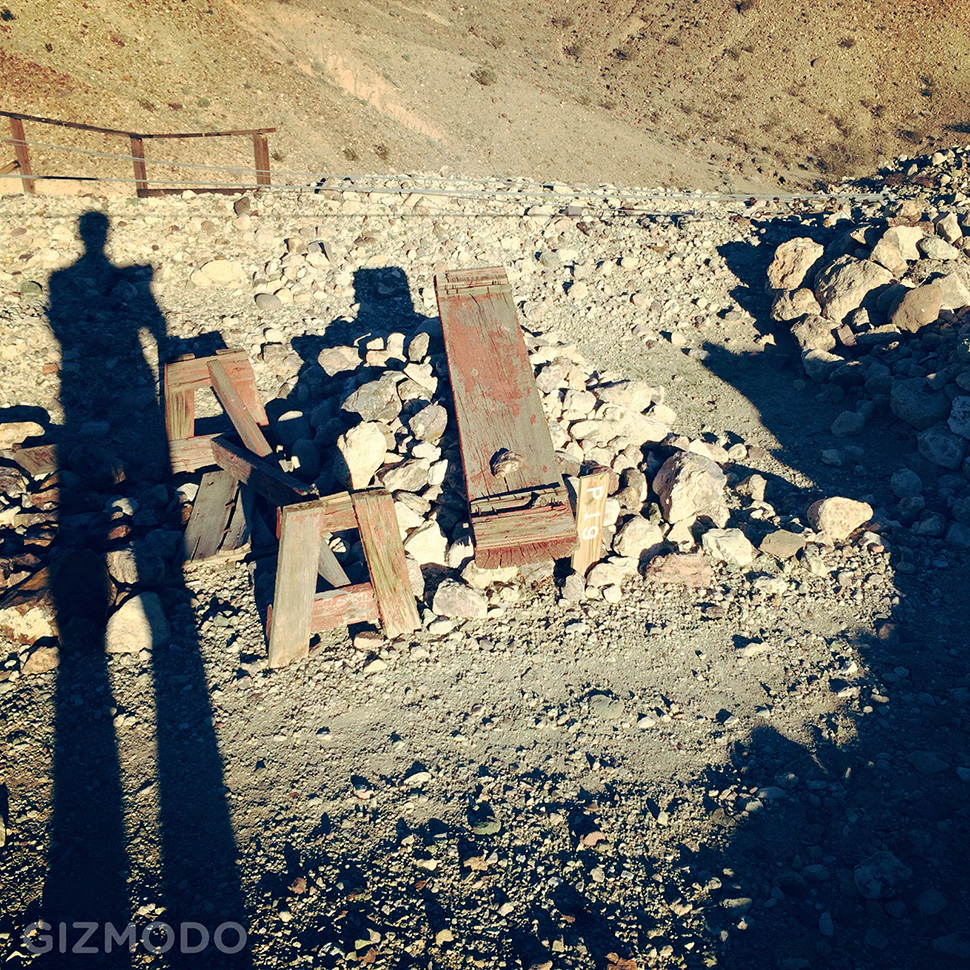
Equally strangely, now imagine stumbling upon the Calico Early Man Site as an alien visitor tasked with interpreting the planetary surface you’ve landed on.
Similar to the Mars rovers, your goal is to sort through the detritus and do some tests; to poke amongst the rocks, analyse some chemicals, and zap a laser here and there to figure out what’s going on.
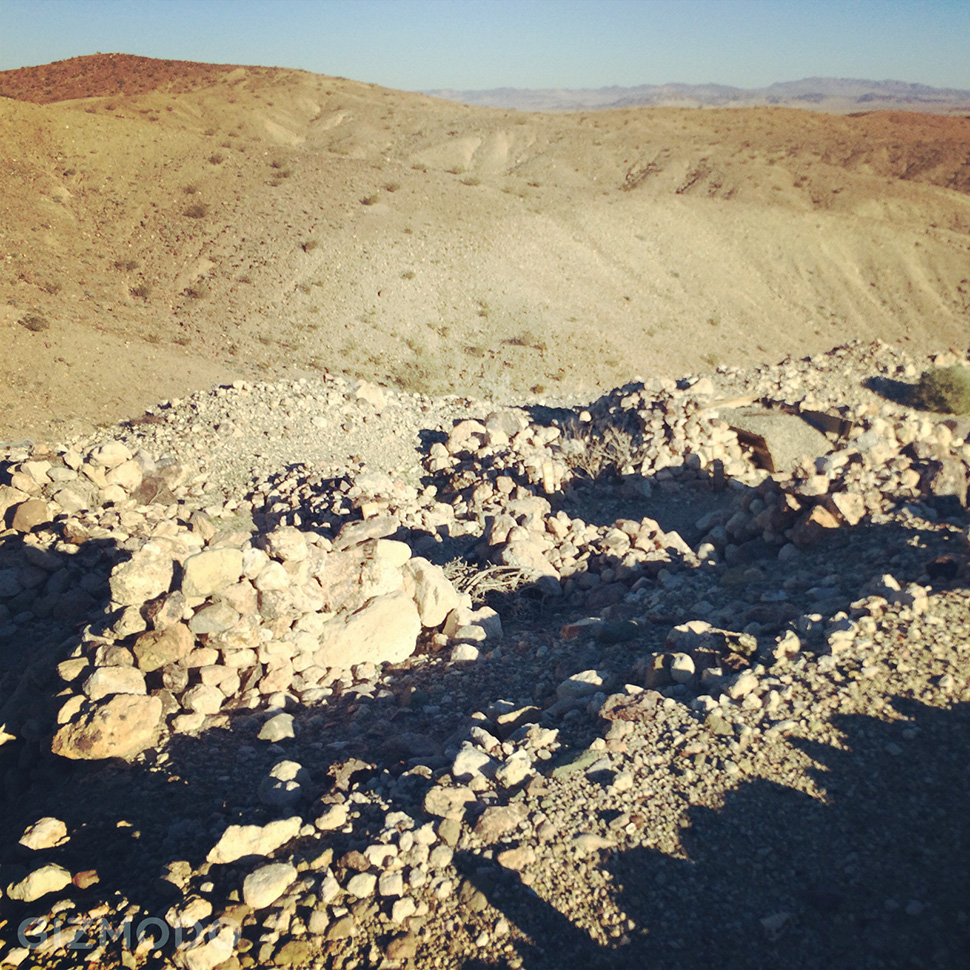

Knowing what you now know about the Calico Early Man Site, however, and visualising, say, the most recent round of landscape photographs taken by NASA’s Opportunity rover, what would you actually make of the apparently geological objects spread out before you on a landscape scale, visually indistinguishable from random rocks and stones?
You have landed in a desert here on Earth to look for signs of life; soon thereafter, you arrive at the Calico Early Man Site. Wheeling and whirring through the dust and sand, what do you make of the weirdly shaped gravel all around you?
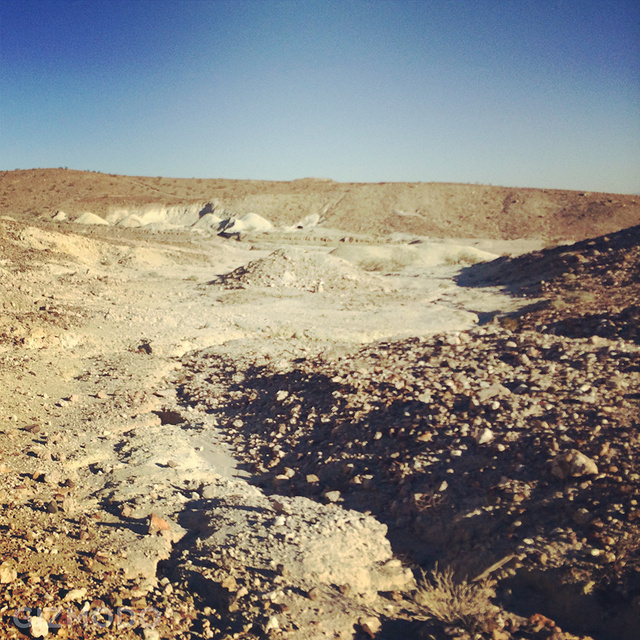
Is that geology — or a well-camouflaged collection of abandoned tools? Are those rocks — or are they an archive of prehistoric technologies?
It is safe to say that I am a sceptic when it comes to the Calico Early Man Site, but I also recognise why such a place holds a deep interpretive fascination for the people who work there (it is an active dig site) and why they continue to study it.
There is something immensely compelling about the idea that humans once settled here, hunting and butchering animals on the shores of a now-lost lake, and that many of the rocks now found here are actually tools specifically shaped to aid those activities.
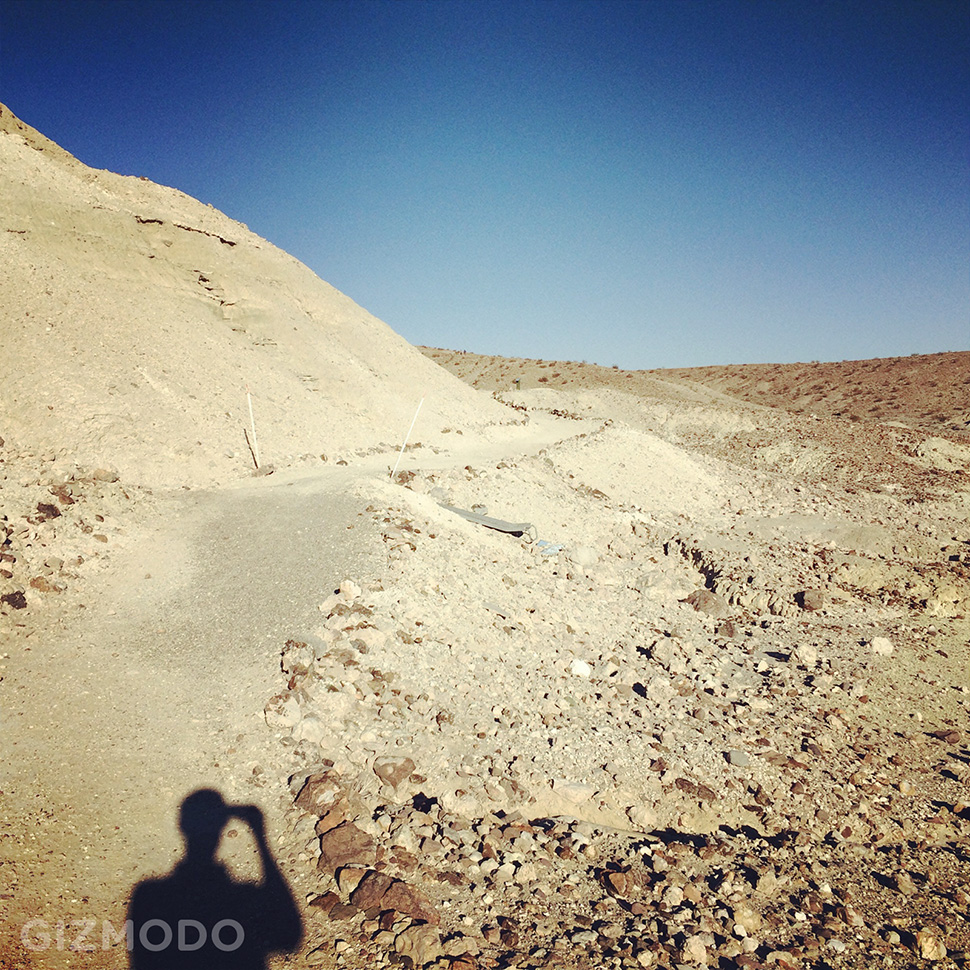
What’s amazing about the site is how it foregrounds this impossible task of interpretation. In another context — and the reason I mentioned the “alien visitor” thing, above — it also challenges our ability to understand what we see on other planets and whether we can interpret those landscapes at all.
After all, if even the rocks around us might be ancient tools, what does that say about our understanding of other worlds and other landscapes? Would we be able to recognise signs of technology and intelligence in the depths of space when those things, even here, two hours outside of Los Angeles, within a few miles of a major freeway, seem so hard to distinguish?
This is by no means the larger investigative purpose of the Calico Early Man Site, but this is nonetheless the question that it poses.
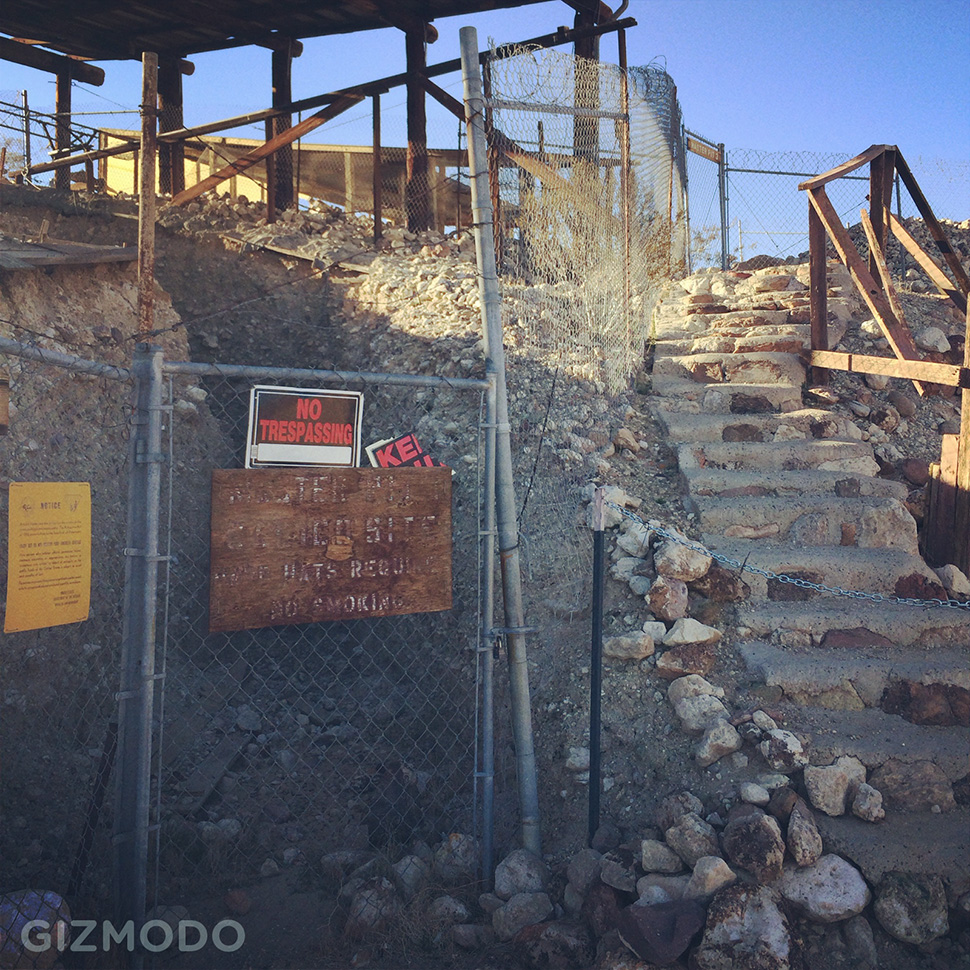
Briefly, I’m reminded of a point made in a recent book by Paul Murdin. There, Murdin quotes the work of paleontologist Simon Conway-Morris. Conway-Morris, discussing the difficulty of discovering and recognising life on other planets, suggests that we would most likely not have any idea what we’re even looking at. As he puts it, and I love this description, other life forms could be “constructions so unfamiliar that they are only brought home by accident and then inadvertently handed over for curation in a department of mineralogy.”
The idea that ancient artifacts might also be “inadvertently handed over for curation in a department of mineralogy” is astonishing, and this is what Chris Christensen, at the Calico site, also implied when describing how the site had been picked over by gem hunters.
In any case, on my way out of the site I noticed the sifting screens — objects through which the landscape is filtered, in order to separate larger rocks and possible artifacts from the dust and sand — which took on the status of metaphor for the entire operation. It is through these gridded objects that we seek to locate the fine line between nature and artifice, geology and technology.
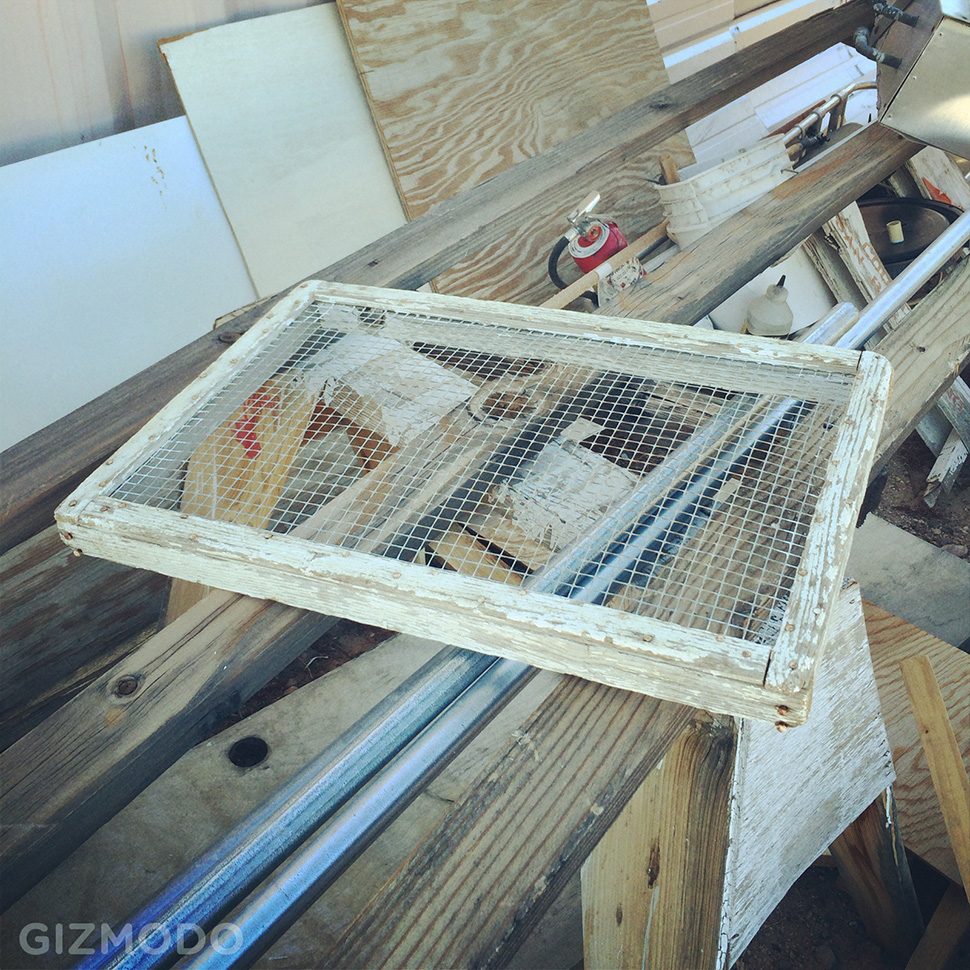

The Calico Early Man Site is open to the public, requires driving on unpaved roads, and is roughly midway between Las Vegas and Los Angeles. Some of the paths were closed when I was there due to damage from an earlier rain storm, but they should be open again soon. [Bureau of Land Management]
